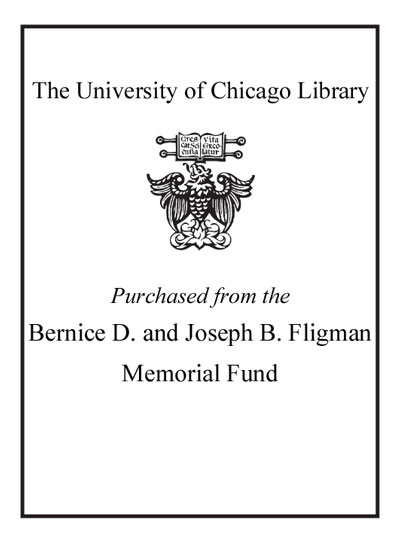|
|
|
|
| LEADER |
00000cam a2200000 i 4500 |
| 001 |
13158452 |
| 008 |
230227s2023 kyuacf b 001 0 eng |
| 005 |
20230919163353.8 |
| 010 |
|
|
|a 2023006025
|
| 035 |
|
9 |
|a (GOBI)99994510293
|
| 040 |
|
|
|a DLC
|b eng
|e rda
|c DLC
|d OCLCF
|d UKMGB
|d ZQP
|d ZVP
|d JQW
|d OCLCQ
|d YDX
|
| 020 |
|
|
|a 9780813197913
|q hardcover
|
| 020 |
|
|
|a 0813197910
|q hardcover
|
| 020 |
|
|
|z 9780813197920
|q electronic book
|
| 020 |
|
|
|z 9780813197937
|q electronic book
|
| 035 |
|
|
|a (OCoLC)1347428214
|
| 042 |
|
|
|a pcc
|
| 043 |
|
|
|a n-us-ca
|a n-us---
|
| 050 |
0 |
0 |
|a PN1995.9.C56
|b E87 2023
|
| 082 |
0 |
0 |
|a 791.43/6564
|2 23/eng/20230227
|
| 100 |
1 |
|
|a Esquevin, Christian,
|e author.
|
| 245 |
1 |
0 |
|a Designing Hollywood :
|b studio wardrobe in the golden age /
|c Christian Esquevin.
|
| 246 |
3 |
0 |
|a Studio wardrobe in the golden age
|
| 264 |
|
1 |
|a Lexington, Kentucky :
|b The University Press of Kentucky,
|c [2023]
|
| 300 |
|
|
|a 250 pages, 24 unnumbered pages of plates :
|b illustrations (some color), portraits ;
|c 27 cm
|
| 336 |
|
|
|a text
|b txt
|2 rdacontent
|
| 336 |
|
|
|a still image
|b sti
|2 rdacontent
|
| 337 |
|
|
|a unmediated
|b n
|2 rdamedia
|
| 338 |
|
|
|a volume
|b nc
|2 rdacarrier
|
| 504 |
|
|
|a Includes bibliographical references and index.
|
| 505 |
0 |
|
|a Costume design in the movies -- Universal Studios -- Fox and 20th Century Fox -- Paramount Pictures -- Warner Bros. -- Metro-Goldwyn-Mayer -- Columbia Pictures -- RKO Pictures -- The wrap up.
|
| 520 |
|
|
|a "Since the 1920s, fashion has played a central role in Hollywood. As the movie-going population consisted largely of women, studios made a concerted effort to attract a female audience by foregrounding fashion. Magazines featured actresses like Jean Harlow and Joan Crawford bedecked in luxurious gowns, selling their glamour as enthusiastically as the film itself. Whereas actors and actresses previously wore their own clothing, major studios hired costume designers and wardrobe staff to fabricate bespoke costumes for their film stars. Designers from a variety of backgrounds, including haute couture and art design, were offered long-term contracts to work on multiple movies. Though their work typically went uncredited, they were charged with creating an image for each star that would help define an actor both on- and off-screen. The practice of working long-term with a single studio disappeared when the studio system began unravelling in the 1950s. By the 1970s, studios had disbanded their wardrobe departments and auctioned off their costumes and props. In Designing Hollywood: Studio Wardrobe in the Golden Age, Christian Esquevin showcases the designers who dressed Hollywood's stars from the late 1910s through the 1960s and the unique symbiosis they developed with their studios in creating iconic looks. Studio by studio, Esquevin details the careers of designers like Vera West, who worked on Universal productions such as Phantom of the Opera (1925), Dracula (1931), and Bride of Frankenstein (1931); William Travilla, the talent behind Marilyn Monroe's dresses in Gentleman Prefer Blondes (1953) and The Seven Year Itch (1955); and Walter Plunkett, the Oscar-winning designer for film classics like Gone with the Wind (1939) and An American in Paris (1951). Featuring black and white photographs of leading ladies in their iconic looks as well as captivating original color sketches, Designing Hollywood takes the reader on a journey from drawing board to silver screen"--
|c Provided by publisher.
|
| 650 |
|
0 |
|a Costume.
|
| 650 |
|
0 |
|a Fashion in motion pictures.
|
| 650 |
|
0 |
|a Clothing and dress in motion pictures.
|
| 650 |
|
0 |
|a Fashion designers
|z California
|z Los Angeles.
|
| 650 |
|
0 |
|a Costume design
|z United States
|x History
|y 20th century.
|
| 650 |
|
7 |
|a Clothing and dress in motion pictures.
|2 fast
|0 (OCoLC)fst01902828
|
| 650 |
|
7 |
|a Costume.
|2 fast
|0 (OCoLC)fst00880759
|
| 650 |
|
7 |
|a Costume design.
|2 fast
|0 (OCoLC)fst00880794
|
| 650 |
|
7 |
|a Fashion designers.
|2 fast
|0 (OCoLC)fst00921628
|
| 650 |
|
7 |
|a Fashion in motion pictures.
|2 fast
|0 (OCoLC)fst00921643
|
| 651 |
|
7 |
|a California
|z Los Angeles.
|2 fast
|0 (OCoLC)fst01204540
|
| 651 |
|
7 |
|a United States.
|2 fast
|0 (OCoLC)fst01204155
|
| 648 |
|
7 |
|a 1900-1999
|2 fast
|
| 655 |
|
7 |
|a History.
|2 fast
|0 (OCoLC)fst01411628
|
| 929 |
|
|
|a cat
|
| 999 |
f |
f |
|s 69950903-8206-428d-93d6-1af3e28592ac
|i ab7ad1e3-e5e0-4f17-96b1-0c2e8c08df87
|
| 928 |
|
|
|t Library of Congress classification
|a PN1995.9.C56E87 2023
|l JRL
|c JRL-Gen
|i 13298779
|
| 927 |
|
|
|t Library of Congress classification
|a PN1995.9.C56E87 2023
|l JRL
|c JRL-Gen
|e FLIG
|b 118575010
|i 10514232
|

